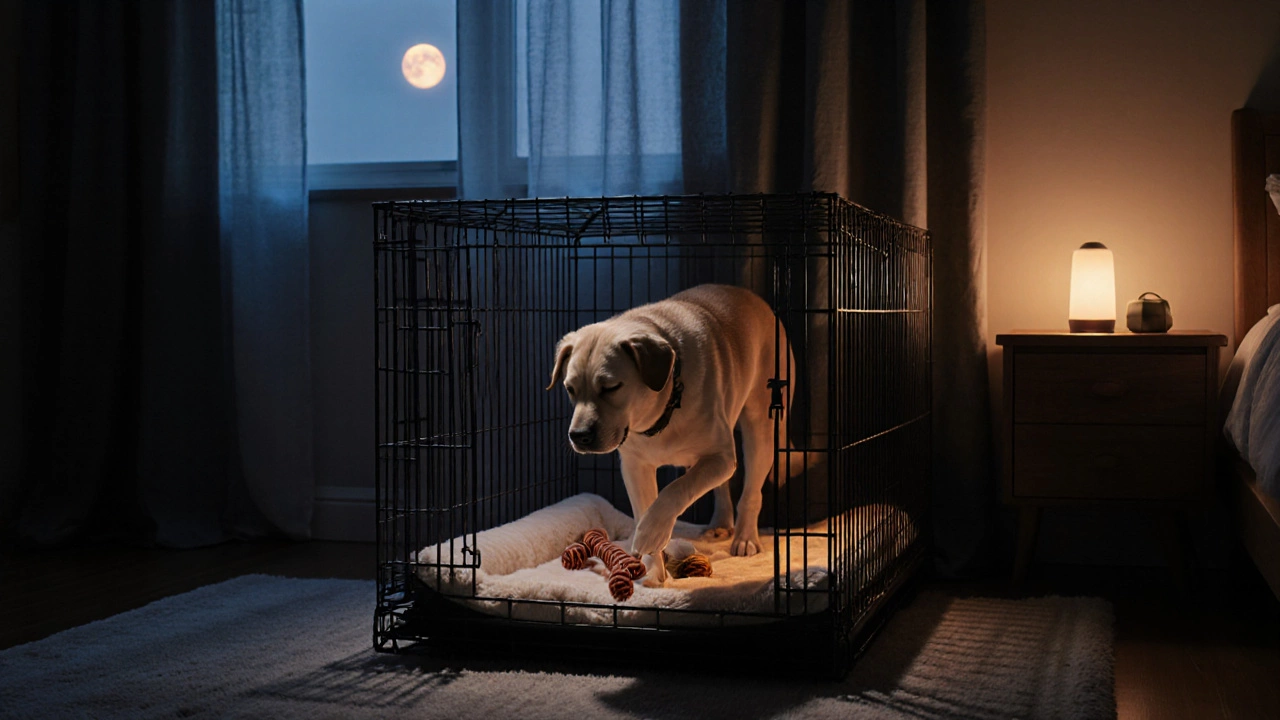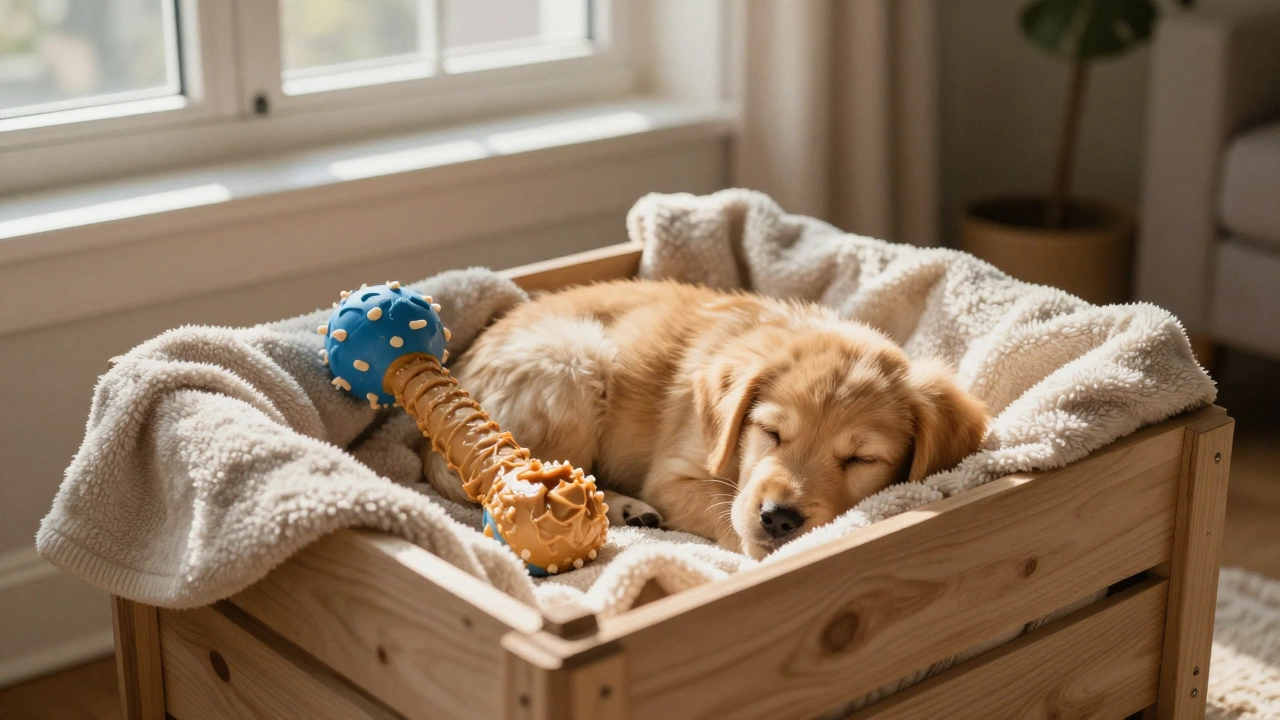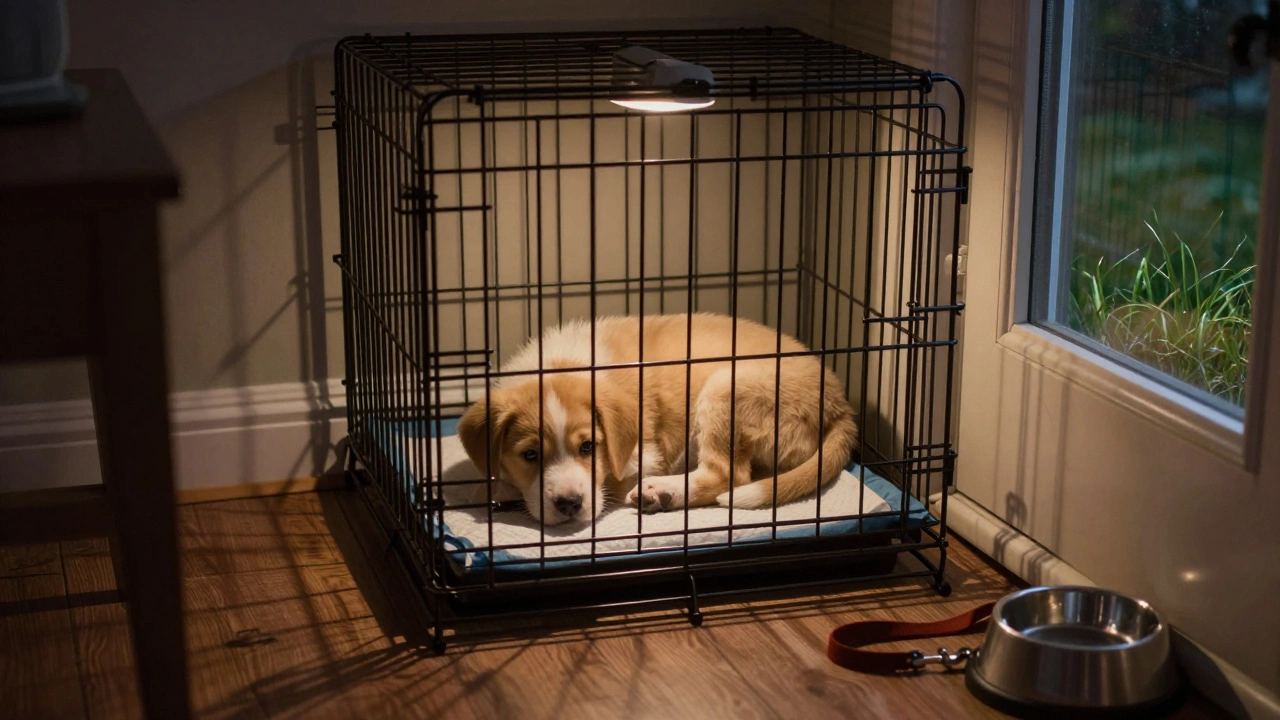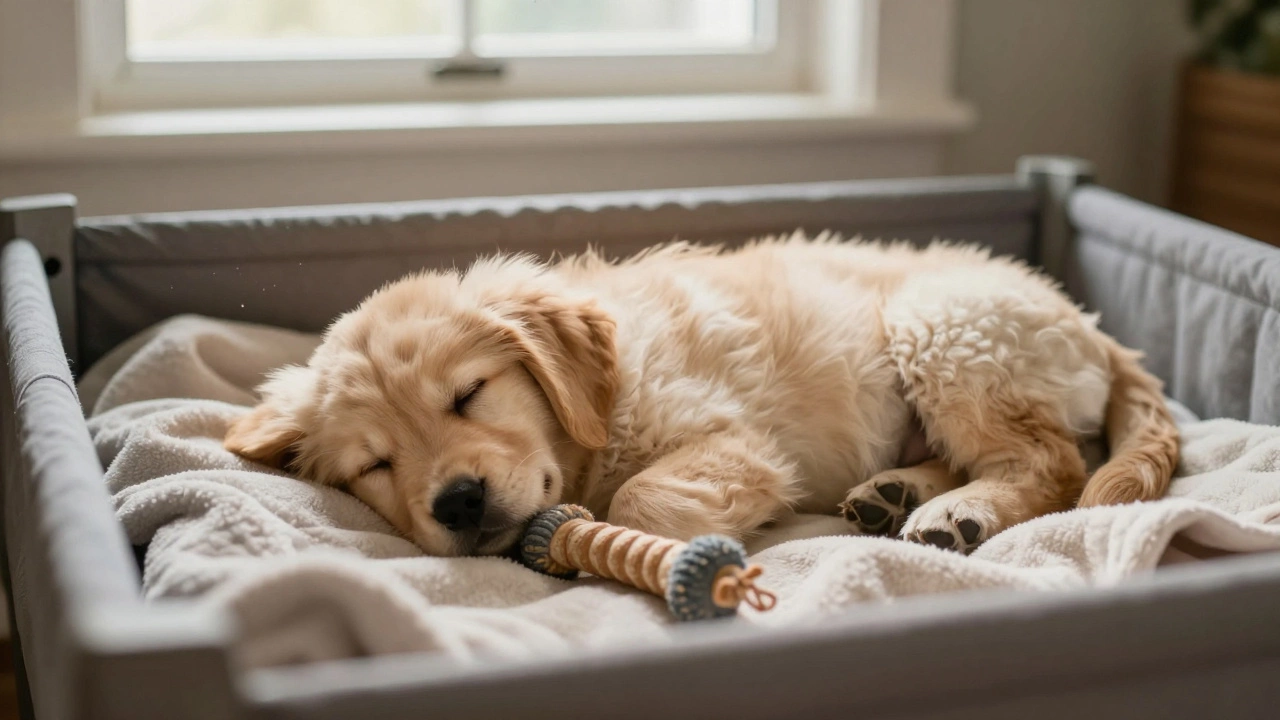Dog Sleep Calculator
Your Dog's Information
Sleep Recommendations
Sleep Tips for Your Dog
- Set a consistent bedtime routine - Dogs thrive on predictability.
- Dim lights 30 minutes before bedtime - Helps signal melatonin production.
- Provide a comfortable sleeping area - Consider orthopedic beds for older dogs.
Ever wonder if your pooch knows when it’s time to hit the sack? Dogs don’t read clocks, but they do have internal signals that tell them when the day’s winding down. In this guide we’ll break down how a dog’s body clock works, what signs they give, and how you can set up a bedtime routine that both you and your furry friend will love.
Do Dogs Have an Internal Clock?
Dog is a domesticated canine that lives closely with humans and relies heavily on routine for emotional stability. Like humans, dogs run on a Circadian rhythm a roughly 24‑hour cycle that regulates sleep, hormone release, and body temperature. This rhythm is driven by light exposure, meal times, and activity levels, so even without a wall clock they can gauge when night is approaching.
Researchers measuring melatonin - the hormone that signals darkness - have found that a dog’s melatonin spikes just before sunset, mirroring the human pattern. The rise in Melatonin a hormone produced by the pineal gland that promotes sleepiness tells the brain it’s safe to wind down.
How Dogs Signal They’re Ready for Bed
Most owners recognize a few classic cues, but there’s a whole spectrum you can learn to read:
- Yawning and stretching - a built‑in way to release tension before sleep.
- Slowing down play - they’ll start moving at a more relaxed pace.
- Seeking a cozy spot - a favorite rug, dog bed, or even the foot of the bed becomes a magnet.
- Reduced barking or whining - vocalizations typically drop once the dog feels safe.
- Eye‑drooping or half‑closed lids - a direct sign the Sleep cycle a series of REM and non‑REM phases that repeat throughout the night is kicking in.
Pay attention to these signs for at least a week and you’ll start to anticipate when your dog is silently asking for lights off.
Creating a Consistent Bedtime Routine
Routines work because they reinforce the circadian rhythm. Here’s a step‑by‑step plan you can try:
- Set a fixed Bedtime routine a series of calming actions performed each night before sleep - for example, a short walk, a gentle brush, and a quiet cuddle.
- Dim the lights 30 minutes before the set bedtime to encourage melatonin production.
- Offer a light snack with protein (e.g., a small piece of chicken) to lower blood sugar spikes that can keep dogs alert.
- Place the dog’s bed in a low‑traffic area, away from loud appliances.
- Finish with a calm voice command such as “settle” to signal the final cue.
Follow this sequence for at least ten days and you’ll notice a smoother transition to sleep.
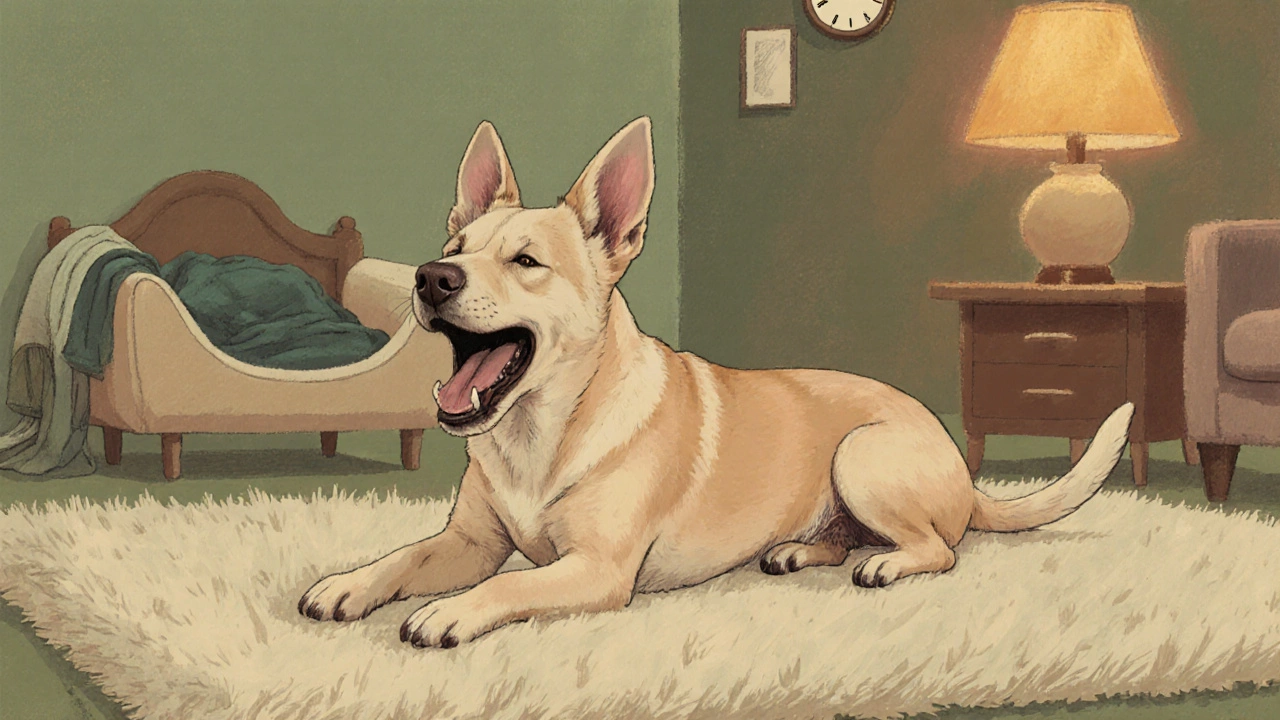
Adjusting Light, Noise, and Activity for Better Sleep
Environmental factors play a huge role:
- Light exposure - keep evening lighting warm and low‑intensity. If your home stays bright, use blackout curtains in the dog’s sleeping area.
- Noise level - a white‑noise machine or a fan can mask sudden sounds that otherwise startle a sleeping dog.
- Physical activity - an evening walk that’s brisk enough to tire the dog, but not so intense that adrenaline remains high, balances the Activity level the amount of physical and mental stimulation a dog receives throughout the day and promotes deeper REM phases.
These tweaks are simple, low‑cost, and especially helpful for city‑dwelling dogs where external noise can be a problem.
Breed and Age Factors in Sleep Needs
Not all dogs need the same amount of shut‑eye. Here’s a quick breakdown:
| Breed Type | Average Age | Hours of Sleep per Day |
|---|---|---|
| Large breeds (e.g., Labrador, Great Dane) | Adult | 12‑14 |
| Small breeds (e.g., Chihuahua, Dachshund) | Adult | 14‑16 |
| Working breeds (e.g., Border Collie, German Shepherd) | Adult | 10‑12 |
| Puppies | 0‑6 months | 18‑20 |
| Senior dogs | 7+ years | 16‑18 |
Older dogs often suffer from Sleep disorders conditions such as canine insomnia or arthritic pain that disrupt normal sleep patterns. A softer mattress or orthopedic bed can alleviate joint pain, making bedtime more appealing.
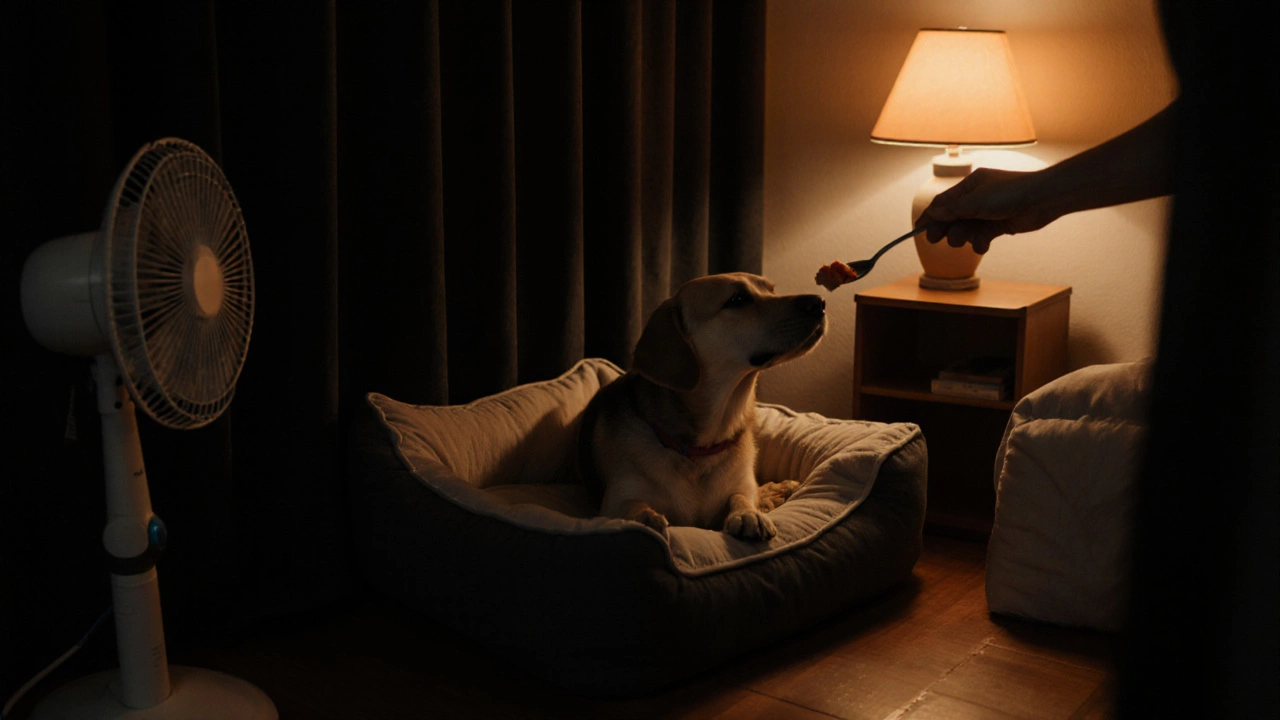
Common Sleep Problems and Solutions
Even with a solid routine, some dogs develop issues. Here are the most frequent and what you can do:
- Restlessness at night - check for hidden noise sources; consider a calming pheromone diffuser.
- Excessive barking - rule out anxiety; a short training session on ‘quiet’ before bed can help.
- Frequent waking - ensure the dog has relieved itself right before bedtime; a night‑time water bowl should be low enough to avoid accidental spills.
- Nighttime accidents - schedule a later evening bathroom break and limit water intake two hours before sleep.
If problems persist for more than two weeks, a vet check‑up can rule out medical causes such as hypothyroidism or pain.
Quick Checklist for a Better Dog Bedtime
- Set a consistent bedtime and stick to it.
- Dim lights 30 minutes prior.
- Provide a short, calming walk.
- Offer a light snack with protein.
- Use a white‑noise machine or fan.
- Keep the sleeping area quiet and comfortable.
- Observe your dog’s cues and adjust the routine as needed.
Following these steps will make it clear to your dog that when you say “lights out,” it’s truly bedtime.
How can I tell if my dog is actually tired?
Look for yawning, slower movements, and a tendency to seek a cozy spot. Dogs also often “flop” onto their side when they feel safe and ready to sleep.
Do all dogs need the same amount of sleep?
No. Large breeds, working breeds, puppies, and seniors all have different sleep needs. See the breed‑age table above for typical ranges.
Can I use human melatonin supplements for my dog?
Never give human melatonin without veterinary guidance. Veterinarians can prescribe dog‑specific doses if needed.
Why does my dog wake up multiple times at night?
Common reasons include needing to go outside, discomfort from an old joint, or anxiety. Check the sleeping area for temperature, lighting, and noise, and consider a vet visit if it continues.
Is a crate a good place for my dog to sleep?
If the crate is properly sized and your dog sees it as a safe den, it can be an excellent sleep spot. Introduce the crate gradually with treats and short naps.
So yes, dogs do pick up on bedtime cues - they just do it in a language of their own. By syncing your schedule with their natural rhythms, you’ll both enjoy a quiet night and wake up ready for the next adventure.



